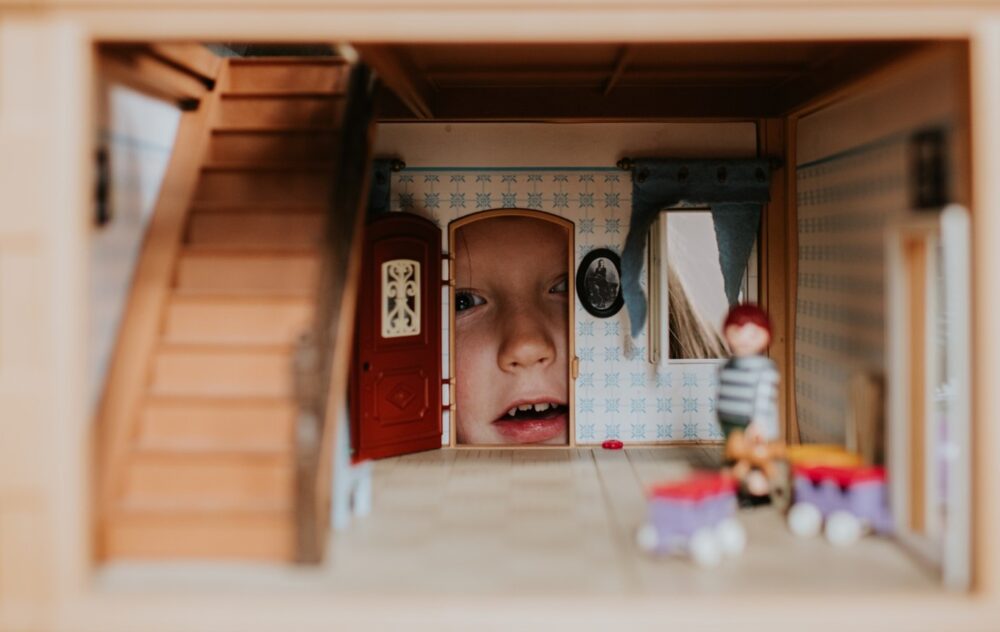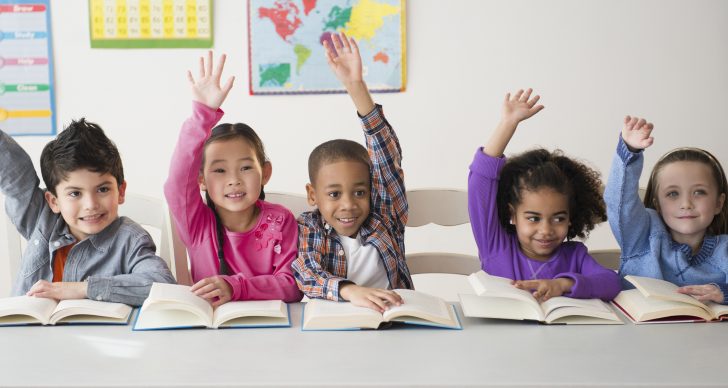Cambridge Early Years is our programme for 3-6 year olds. It gives young learners the best start in life, helping them to meet key early milestones and thrive in and outside of school.
In this blog, Cambridge Early Years author, Gill Budgell, shares some creative activity ideas that will engage young learners.
To create a fun and interesting early years learning environment, it’s important to have a variety of activities that suit different children’s needs and interests, and which may be repeated and adapted to ensure maximum impact. Below, you’ll find ten fun ideas that you can use inside or outside of your classroom.
1. Sheds, shelters, and cosy corners

Children will enjoy taking their play and learning to new sites in your early years setting. Many enjoy the opportunity to find a place of peace, whether alone or with a few friends, and so a shed, shelter, or cosy corner provides the perfect retreat. These micro-environments lend themselves to being tailored to specific children’s needs as well as topics and areas of learning in the curriculum.
“I’m heading to the story shed! Let’s crawl inside here and pretend to be wriggly worms. Oh no, it’s a thunderstorm. Quick! Shelter in here.”
2. The power of opening and closing
There is something exciting about opening and closing things: cabinets, boxes, salt bins, and suitcases. “What might be inside? Let’s guess! How do we open it? Is it locked? Can we get inside? Do the items relate to a storybook we know?” Always ensure these containers are regularly refreshed to create excitement and intrigue.
3. Mats, wallscapes and illusions

Playmats are plentiful and encourage children to explore a setting, often with small-world items. Illusions may also be flat on the floor, or technology-inspired. Wallscapes are in a vertical plane and whether 3D as in a collage display or light projected, they may invite and evoke a more physical response. “I’m an astronaut in space searching for a rocket! I’m deep under the sea looking for a rainbow fish…”
4. Look up, look down, look all around
Children may need help to really notice and observe their world and these resources will encourage just that. Try using magnifying glasses, binoculars, and telescopes. If such equipment is beyond your budget, create simple ‘looking templates’ for children to look through as they explore a setting. Imagine looking through a butterfly-shaped cardboard template or an old metal coat hanger bent into a heart shape. Looking templates should be small enough (and safe enough) to be held up to a child’s face as they move around.
5. Making it together
If you are encouraging children to work together, then providing giant-sized games and activities is a great way to start. Extra-large jigsaw pieces or dominoes made from cards will require children to work in pairs or more to lift them into place. You could also create a maze made from cardboard that requires up to six children to hold and tilt it in order to roll a ball round its path to reach the middle!
6. Streamers, scarves and ribbons
Great resources for physical activity including gross motor movements for handwriting patterns and giant letter formation practice, scarves, ribbons, and streamers are a must. Long before children take a pencil and attempt to write their name on a page, they will be inspired to sky-write their name with a brightly-coloured streak of chiffon, or a feather boa. Others may wriggle a rope on the ground as they make the shape of giant letters or patterns in sand.
7. Moving through or across boundaries
If you have room, provide opportunities for children to feel as if they are moving through boundaries to new worlds. Include arches, gates, doorways, door hangings of ribbons, and tunnels. These will encourage physical movement, but also the language associated with imaginative play: “Through this arch is a world of dinosaurs. Let’s go!; Careful, don’t rush through that tunnel – take your time.”
8. Changing perspective – bird’s eye view
On a recent school visit, the headteacher told me that the best thing she had done for the children’s playground was to create a hill; ‘They run, they puff, they stand majestically on top and then they roll down. They re-enact stories such as The Hare and the Tortoise, but most importantly they use their energy and they laugh together. Shifting perspective can also be useful for children with autism who prefer to stand back and up to get a better understanding of their landscape without being immersed in it and overwhelmed.
9. Playing with scale: enormous and teeny-tiny

Whilst creating the Communication and Language resources for Cambridge Early Years, I came across a Cambridge-based tiny door project which is described as ‘unexpected wonder as you wander’. The project has been created to spread joy as people walk around the city. It inspired me to reflect on how the scale of resources and activities could be impactful in children’s learning. We know that an inflated bouncy castle is irresistible in bounce and scale, but what questions might its deflation provoke? “How can we get the air out? What will the air sound like and where will it go? What will the castle look like when it’s flat on the ground?”
10. Making your mark
No early years setting list is complete without mention of mark-making and writing. We use our hands and feet in mud, in paint, in foamy water as well as more traditional mark-marking resources of pens, pencils, crayons, and paint brushes. But remember the joy of large marks using brooms, the wheels of bikes, and the strokes of an industrial paintbrush. Explore too, the tiny marks of leaves, twigs, and pieces of fruit. Wooden stamps are fun to use with ink or paint but can be costly so creating your own can be much more fun. Painting stones or pebbles are my personal favourite!
We hope you’ve enjoyed the list of activities and have been inspired to introduce some to your early years classroom.
Learn more about Cambridge Early Years, our programme for 3-6 year olds.
Things to consider when implementing new early years ideas:
- Children learn through a mix of approaches such as high-quality play, adult modelling, observing each other, and guided learning and direct teaching.
- To support children’s learning, your early year’s curriculum needs to be ambitious, well-sequenced and planned around their interests, previous experience, and different starting points.
- According to Play England there is evidence of an increase in mental health issues amongst children aged 5-15 since the pandemic. Play can have a profound positive and preventative effect as children use it as a way of making sense of their world.
When those considerations are all understood and in place, it’s time to have fun and provide playful opportunities for exploration and learning.
Learn more about Cambridge Early Years





